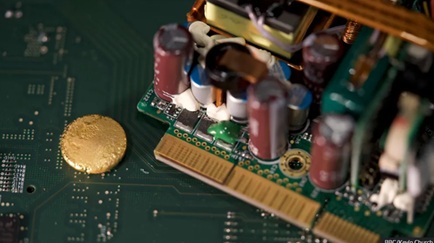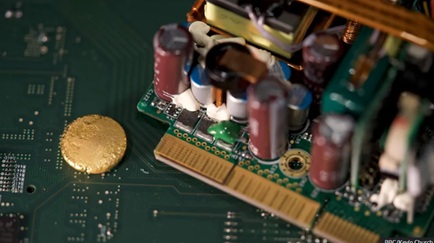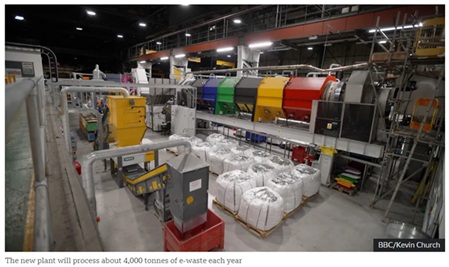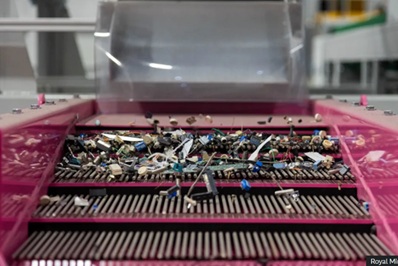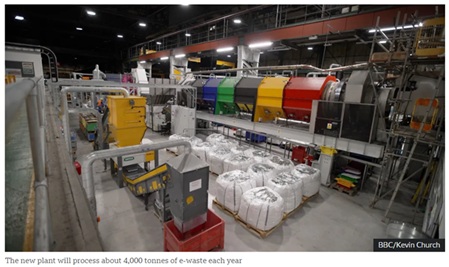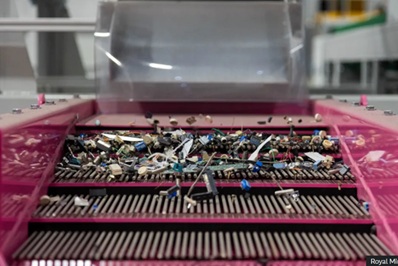Royal Mint starts turning e-waste into gold
E-waste, which includes anything from old phones and computers to TVs, is a rapidly growing problem - the UN says 62m tonnes were thrown away in 2022. Its latest report estimates that the mountain of discarded tech is set to increase by about a third by 2030.
At the Royal Mint plant, piles of circuit boards are being fed into the new facility. First, they are heated to remove their various components. Then the array of detached coils, capacitors, pins and transistors are sieved, sorted, sliced and diced as they move along a conveyor belt. Anything with gold in it is set aside. “What we're doing here is urban mining,” says head of sustainability Inga Doak. “We're taking a waste product that's being produced by society and we're mining the gold from that waste product and starting to see the value in that finite resource.”
The gold-laden pieces go to an on-site chemical plant. They’re tipped into a chemical solution which leaches the gold out into the liquid. This is then filtered, leaving a powder behind. It looks pretty nondescript but this is actually pure gold – it just needs to be heated in a furnace to be transformed into a gleaming nugget.
“Traditional gold recovery processes are very energy intensive and use very toxic chemicals that can only be used once, or they go to high energy smelters and they're basically burnt,” says Leighton John, the Royal Mint's operations director. “The groundbreaking thing for us is the fact that this chemistry is used at room temperature, at very low energy, it’s recyclable and pulls gold really quickly.”
There’s no shortage of e-waste for the Royal Mint to target. The UN's 2024 e-waste report places the UK as the second biggest producer of tech trash per capita, beaten only by Norway. “Our aim is to process over 4,000 tonnes of e-waste annually,” says Leighton John. “Traditionally this waste is shipped overseas but we're keeping it in the UK and we're keeping those elements in the UK for us to use. It's really important.”
Reference: BBC NEWs
